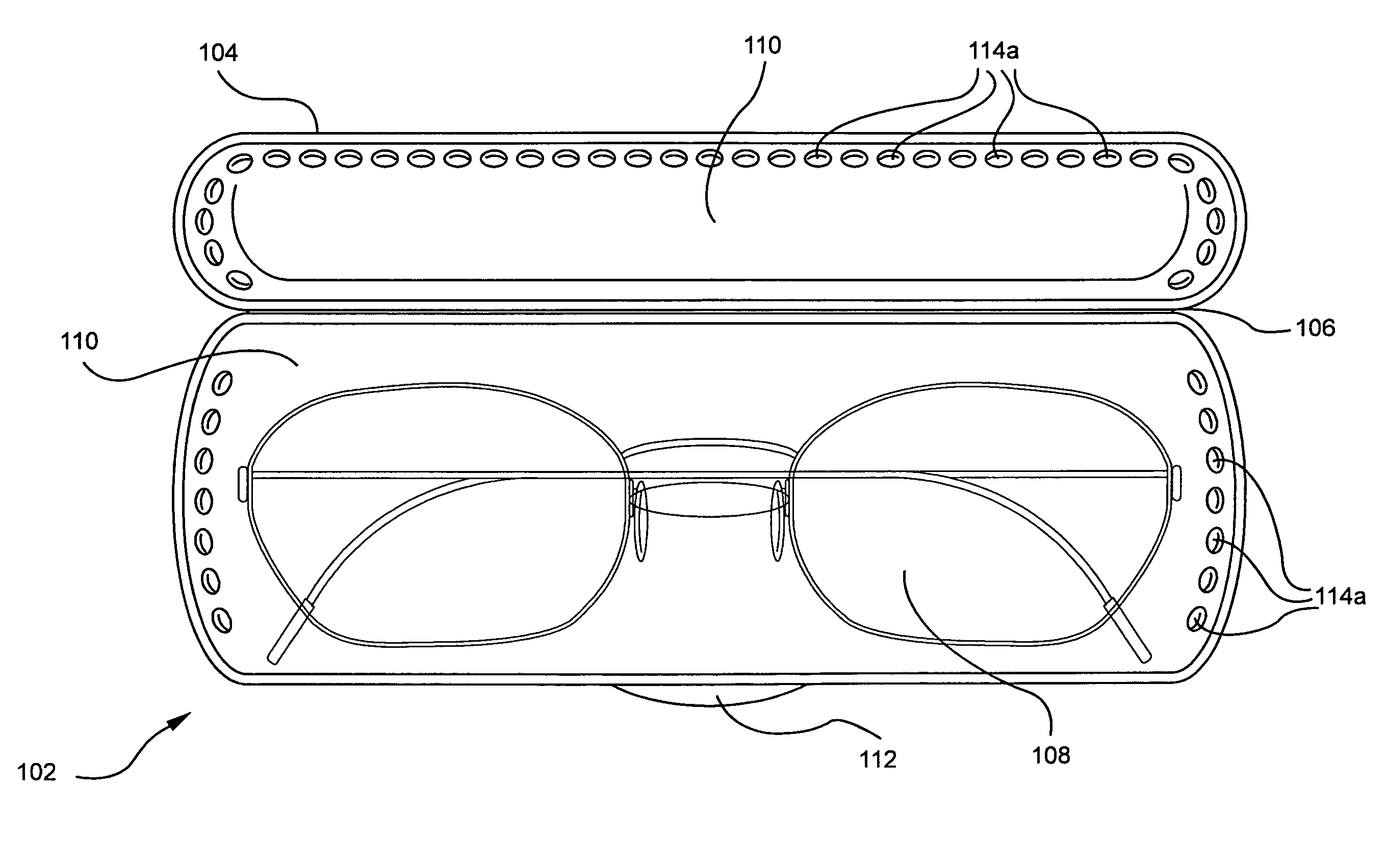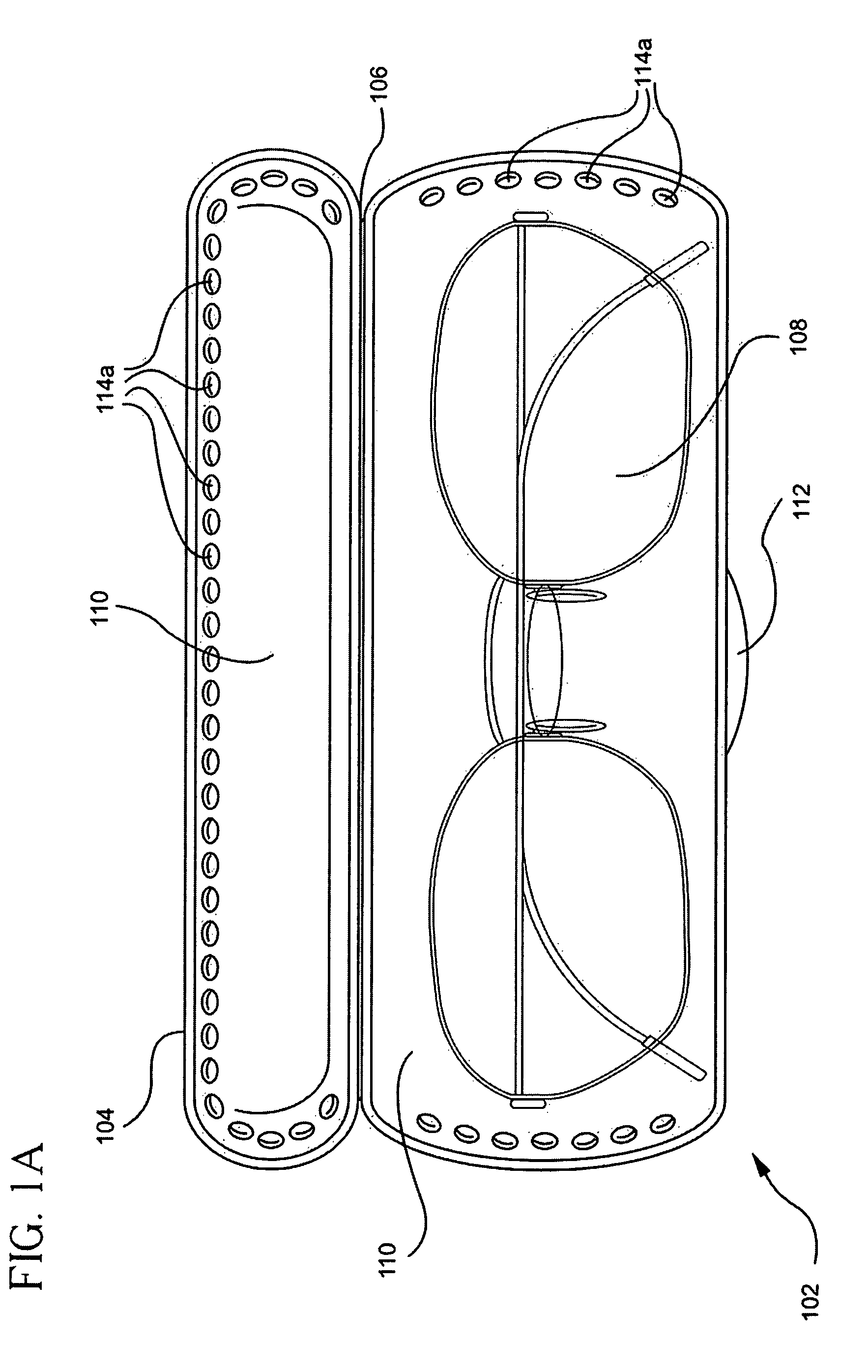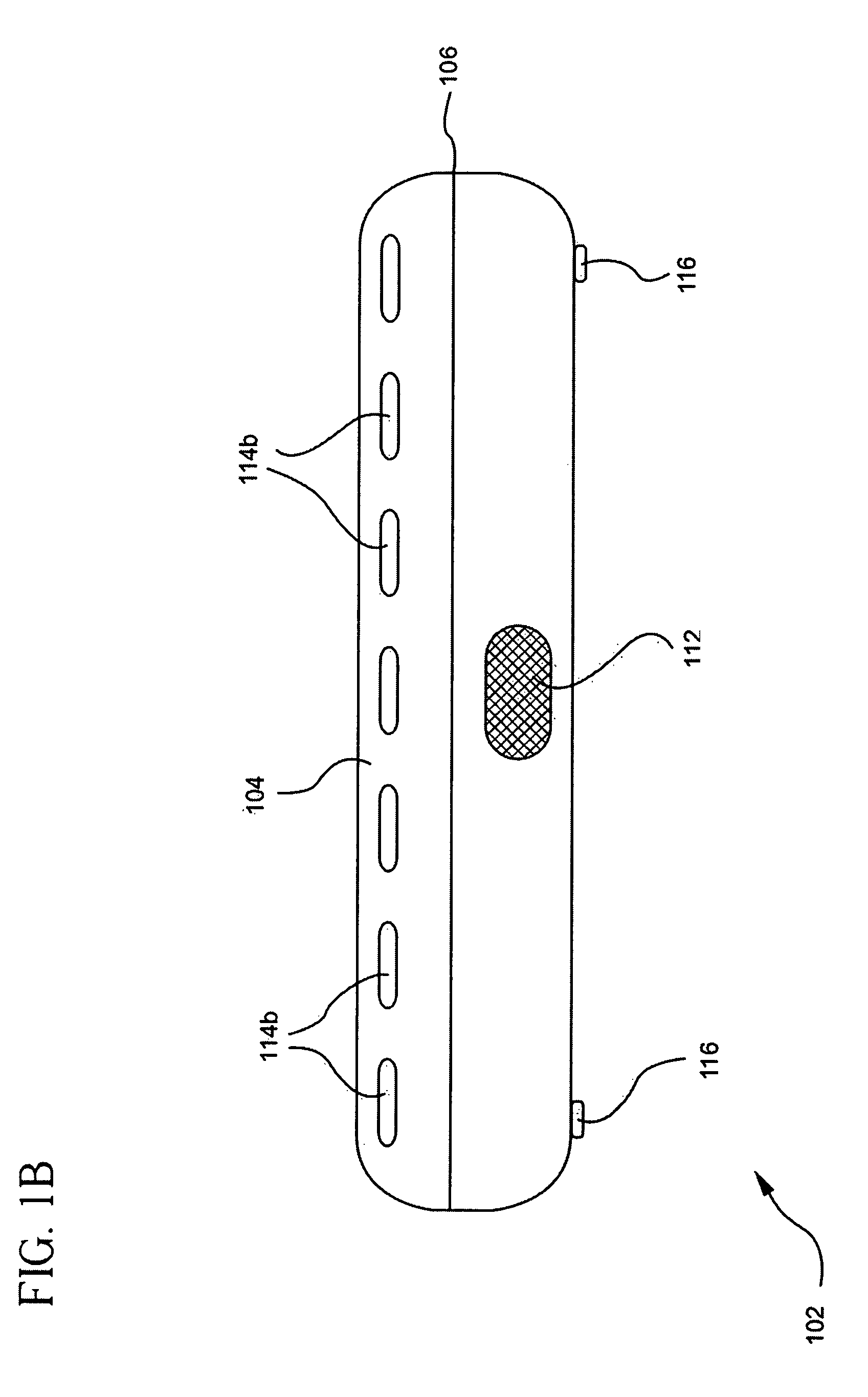Eyeglasses case
a technology for eyeglasses and cases, applied in the field of containers, can solve the problems of user's eyeglasses being contaminated with oil, dirt, hair and other debris left by previous users of the cases, and the device may be erroneously activated, and achieve the effect of simple voice command
- Summary
- Abstract
- Description
- Claims
- Application Information
AI Technical Summary
Benefits of technology
Problems solved by technology
Method used
Image
Examples
Embodiment Construction
[0023]Referring to FIG. 1a, illustrated is a top view of a lidded embodiment of the invention, with container lid open, retaining a pair of eyeglasses. Container 102 has a lid 104 connected at hinge 106. In this illustration, eyeglasses 108 are retained within a compartment of container 102. Embodiments provide soft, lint-free material 110, such as felt or soft fiber cloth, within the interior of container 102 and lid 104, protecting the lenses of eyeglasses 108 from abrasive contact with the container interior. The invention further provides a transducer 112 and lights 114a (as illustrated, only some lights 114a are labeled for the sake of clarity). In operation, transducer 112 is operative to detect an action by the user (described in greater detail in reference to FIG. 3), operative to cause the opening of lid 104 and the illumination of lights 114a upon detecting the action, thereby presenting an open and illuminated compartment for the user to place or retrieve eyeglasses. Oper...
PUM
 Login to View More
Login to View More Abstract
Description
Claims
Application Information
 Login to View More
Login to View More - R&D
- Intellectual Property
- Life Sciences
- Materials
- Tech Scout
- Unparalleled Data Quality
- Higher Quality Content
- 60% Fewer Hallucinations
Browse by: Latest US Patents, China's latest patents, Technical Efficacy Thesaurus, Application Domain, Technology Topic, Popular Technical Reports.
© 2025 PatSnap. All rights reserved.Legal|Privacy policy|Modern Slavery Act Transparency Statement|Sitemap|About US| Contact US: help@patsnap.com



